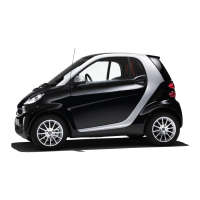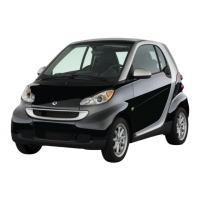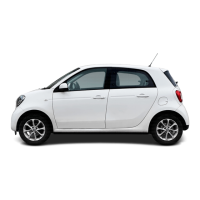Charging the high voltage battery
Notes on high voltage battery charging
Note the following when charging the high
voltage battery:
● Check the charging cable before charg-
ing the vehicle. Never use a charging
cable with damaged skin or shell.
● Before charging, make sure that there is
no water or foreign objects in the
charging port of the vehicle, power sup-
ply equipment and charging connection
device, and the metal terminal is not
rusted or corroded.
● Charge the vehicle in a safe environ-
ment. Avoid rain and water immersion
and stay away from fire sources.
● Never disassemble or modify the charg-
ing equipment or related ports by
yourself.
● Choose a dry and ventilated environ-
ment. Never use the charging equip-
ment in an environment where gasoline,
paint, flammables or explosives are
used or stored.
● Never use the charging cable in a dark
or humid place.
● Never allow children to charge the
vehicle.
● Never touch the charging port.
● Never charge the vehicle in rainy days if
there is no awning.
● In case of sudden weather change (gale,
rain, snow and thunderstorm) when
charging outdoor, check whether the
charging gun is well connected and dry.
During thunder and lightning, never
touch the charging cable or vehicle
body.
● In case of moisture near the charging
port, first make sure it is safe, then cut
off the power supply and disconnect
the charging gun (never touch the metal
part of the charging socket with your
hand or other parts of your body). If
necessary, use insulated gloves and
contact a smart Authorized Service
Partner for inspection as soon as
possible.
● If the vehicle emits peculiar smell during
charging, stop charging immediately.
● When charging, never squeeze the
charging cable.
● After charging, never disconnect the
charging connection device when your
hands are wet or standing in water.
● Make sure that the charging connection
device is disconnected from the vehicle
charging port before operating the
vehicle.
WARNING Risk of fatal injury from
damaged components
At charging stations with a pre-in-
stalled charging cable:
● Visually check the charging equip-
ment for obvious faults, such as ex-
tensive damage to the housing or
charging cable.
● Always observe the safety notes on
the charging station.
At charging stations without a pre-in-
stalled charging cable:
● For safety reasons, only use charging
cables that have been tested and ap-
proved by the manufacturer for
charging the high voltage battery in
an electric vehicle.
● Never use damaged charging cables.
● Never stretch the charging cable.
● If an adapter is needed, only use
adapters that have been tested and
approved as suitable for charging
electric vehicle high voltage bat-
teries. Observe adapter manufac-
turer’s operation and safety
instructions during operation.
Vehicle charging 89

